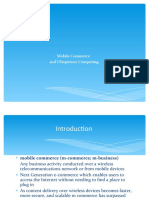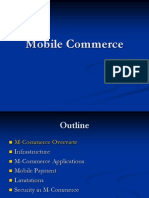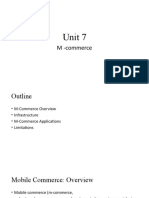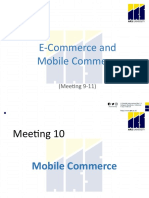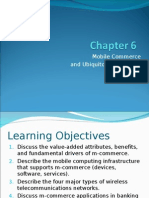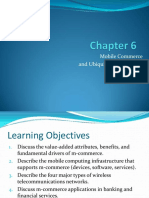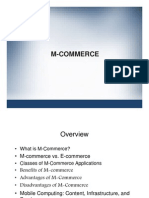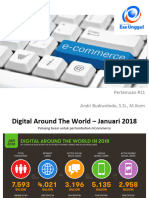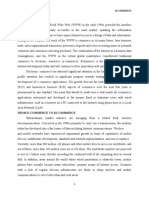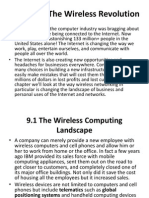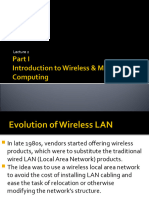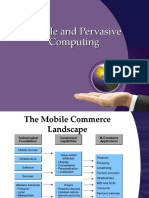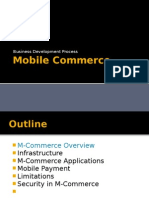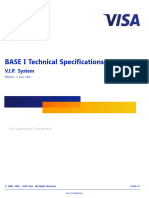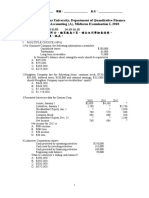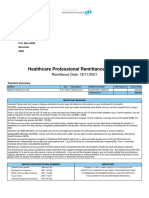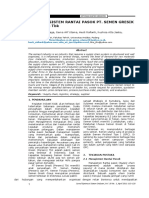0% found this document useful (0 votes)
45 views49 pagesMobile Commerce & Computing Guide
This document discusses mobile computing and mobile commerce. It begins by describing the mobile computing environment including devices like smartphones and PDAs. It then covers the four major types of wireless networks and defines mobile commerce. The document outlines several applications of mobile commerce in areas like finance, shopping, advertising, and content. It also discusses uses of mobile commerce within organizations for tasks like employee support and supply chain management. Finally, it covers emerging technologies like location-based mobile commerce and pervasive computing.
Uploaded by
Paul KamalaCopyright
© © All Rights Reserved
We take content rights seriously. If you suspect this is your content, claim it here.
Available Formats
Download as DOCX, PDF, TXT or read online on Scribd
0% found this document useful (0 votes)
45 views49 pagesMobile Commerce & Computing Guide
This document discusses mobile computing and mobile commerce. It begins by describing the mobile computing environment including devices like smartphones and PDAs. It then covers the four major types of wireless networks and defines mobile commerce. The document outlines several applications of mobile commerce in areas like finance, shopping, advertising, and content. It also discusses uses of mobile commerce within organizations for tasks like employee support and supply chain management. Finally, it covers emerging technologies like location-based mobile commerce and pervasive computing.
Uploaded by
Paul KamalaCopyright
© © All Rights Reserved
We take content rights seriously. If you suspect this is your content, claim it here.
Available Formats
Download as DOCX, PDF, TXT or read online on Scribd
/ 49



